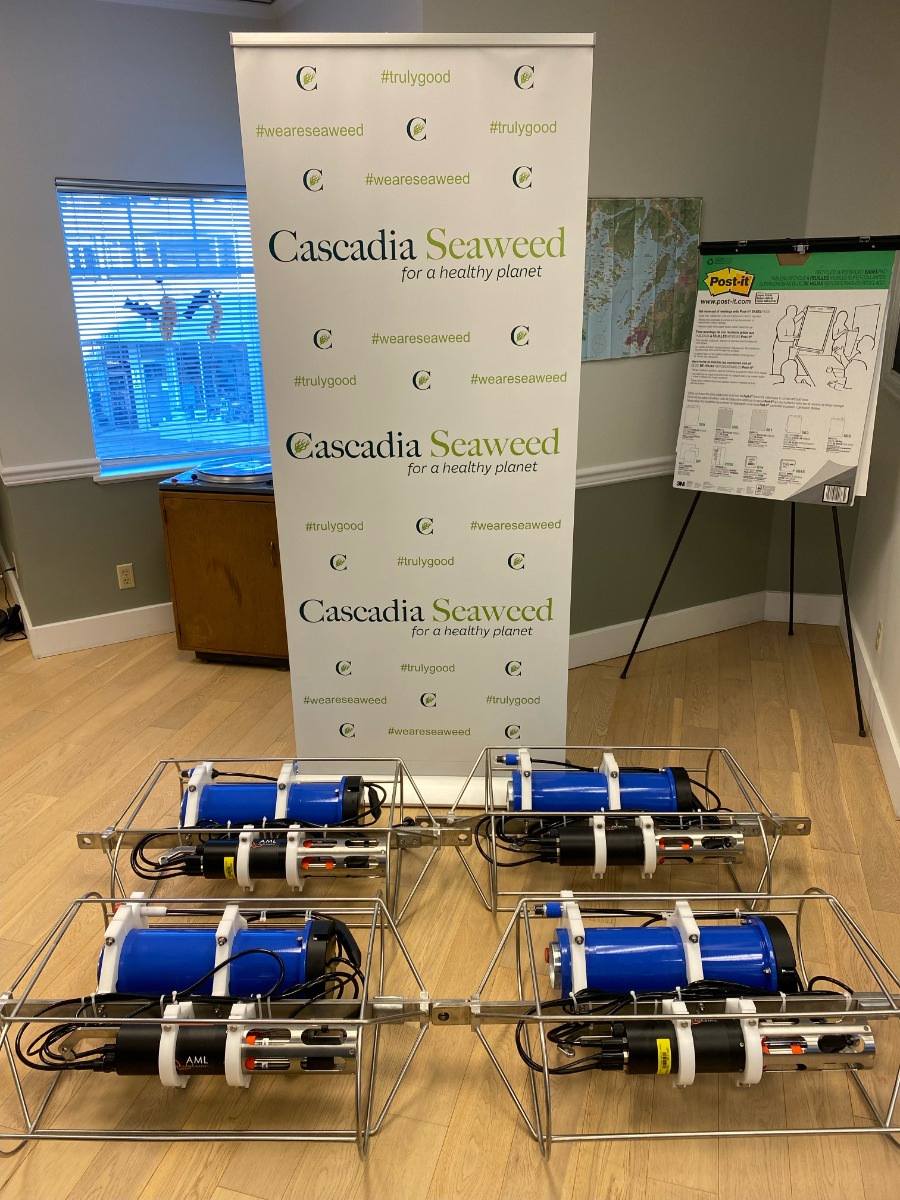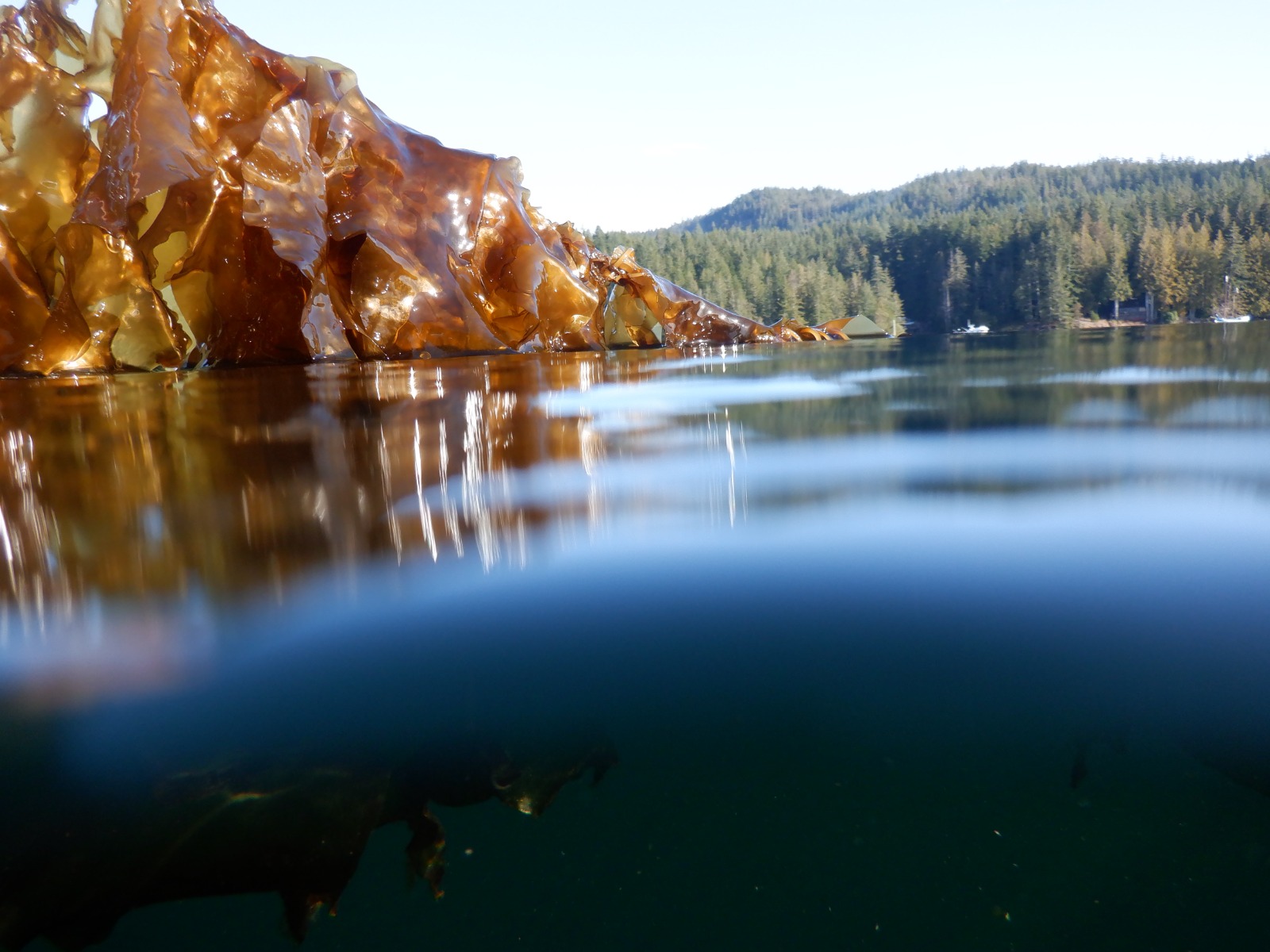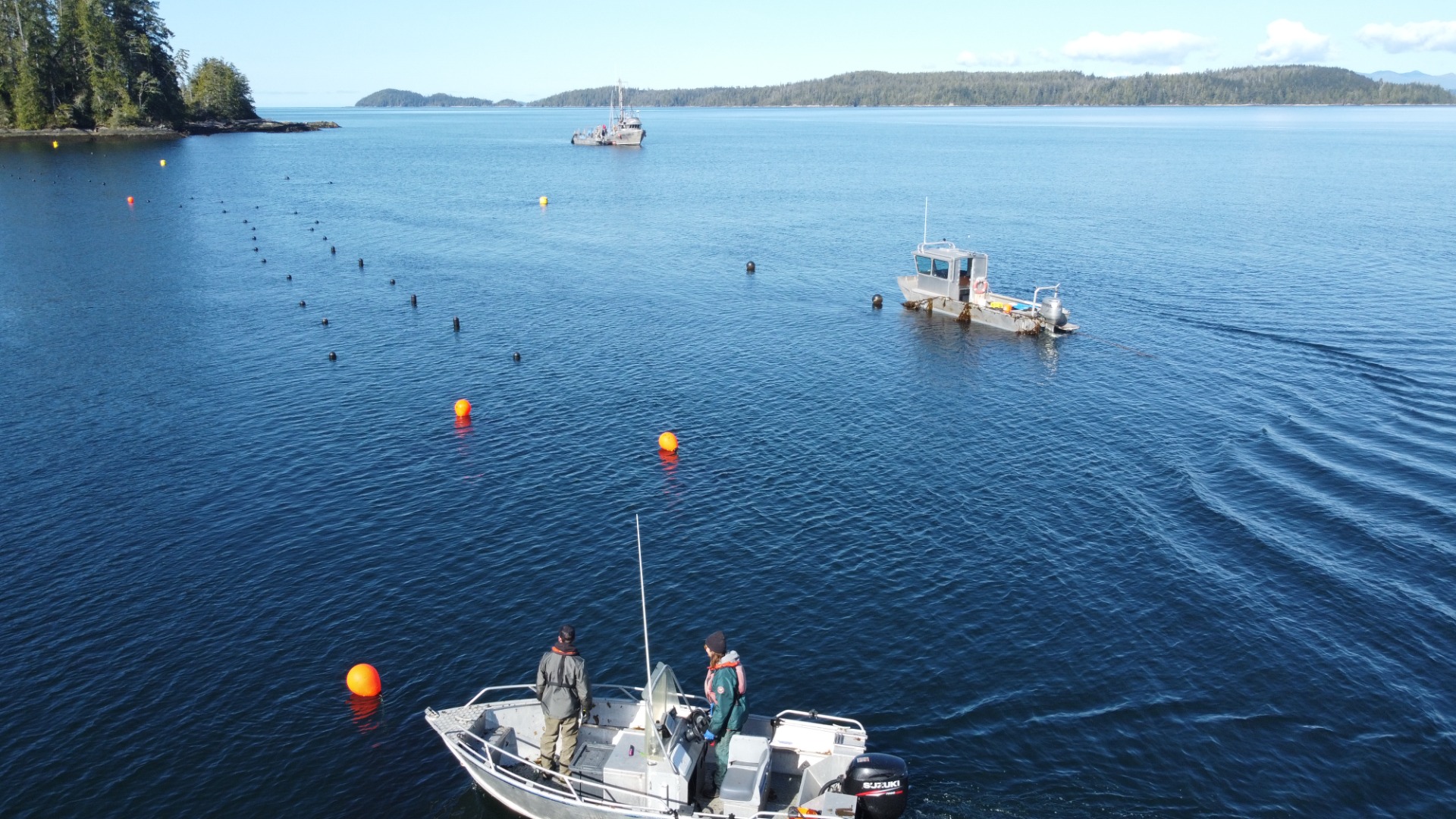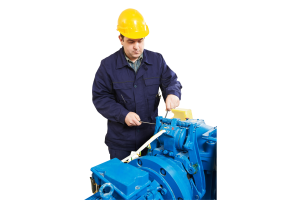Using Kelp Farms to Help Fish Biodiversity
By: Dallace Johnson, Marketing Lead - AML Oceanographic &
Dr. Colin Bates, Senior Research Scientist - Cascadia Seaweed
With funding from Canadian federal and provincial governments, Cascadia Seaweed is studying its kelp farms as habitats for salmon and other marine life. The BC SRIF project aims to research the protection and restoration of wild fish stocks, including salmon, which has seen a decline in population.
The Background
Marine survival rates of salmon in the Salish Sea have been steadily decreasing in the past 50 years. Studies have shown that there are many contributing, interlinked factors to this decline. Among the top influencers are disruptions in food webs and predation. Concurrently, a climate-driven decline in forage fish and plankton is underway. Without these important prey resources for the salmon and other wildlife, food grows scarce. In turn, the lack of nearshore habitat complexity leaves salmon vulnerable to larger prey, such as harbor seals. Research has already concluded that naturally occuring kelp forests benefit the salmon and forage fish that inhabit them. Therefore, it is worth assessing if purpose-built kelp farms can do the same.
Figure 1 - Kelp being harvested. (Image courtesy of Cascadia Seaweed)
Rather alarmingly, kelp forests have been declining at a rate of ~2% per year globally. They are disappearing due to coastal development, rising ocean temperatures, and changes in oceanographic conditions. The expansion of herbivore populations, such as sea urchins, has also been a major driver of kelp loss. Without kelp, there are serious implications for the viability of ocean biodiversity and the environment at large. Fortunately, one company on Vancouver Island is on a mission to heal the ocean with their kelp farms.
Cascadia Seaweed

Figure 2 - Cascadia Seaweed team holds up the harvest from Barkley Sound farm. (Image courtesy of Cascadia Seaweed)
The Project
The Solution
To monitor their farms, Cascadia has built 21 underwater video cameras, nicknamed ‘KelpCams’¹. Cascadia has modified the open-source technology to uniquely suit this project’s purpose. These cameras help visually monitor the kelp farms as a habitat for salmon and other fish native to the area. Additionally, ROVs and divers are used to conduct surveys to further evaluate fish communities found in their farms. But this information only provides part of the answer. Oceanographic conditions are required to be observed and compared with the data collected from the video imagery. For this, Cascadia turned to AML Oceanographic.
“We needed instruments that were proven, highly programmable, capable of long duration tethered deployments, multi-parameter with capabilities to measure variables relevant to both fish and seaweeds, and with means to counter the inevitable biofouling seen in marine environments,” said Dr. Bates.
Watch This Reel
Learn more about Cascadia Seaweed's mission to evaluate kelp farms as habitats for marine life on the company's Instagram page.

Figure 4 - The AML-6 multiparameter instruments used in Cascadia Seaweed's project.
Deployed at each kelp farm and reference site is a real-time AML-6 CTD instrument. This AML-6 outputs salinity and depth; other sensors measure conductivity, temperature, pressure, dissolved oxygen, photosynthetically active radiation (PAR), turbidity, and chlorophyll. Cascadia’s AML instruments are also fitted with a Street Lamp UV, as the sites are prone to rapid marine growth aka biofouling. With UV Biofouling protection, Cascadia is able to leave their instruments in situ for longer periods of time while still collecting accurate data. Without biofouling protection, alternative sondes would require frequent, expensive trips to the site for cleaning and maintenance. Having an instrument as consistent and versatile as the AML-6 means that Cascadia can collect a variety of new information from the sites. Ultimately, they will gain a better understanding of the conditions needed to promote biodiversity.
“We are just at the start of the project, so haven’t had time to capture more than a few months of data, but so far we are impressed with the level of detail in the data, and ease of use of the AML-6. We can already see how the AML-6 platform will be useful in profiling potential tenure sites, and monitoring the performance of our farms throughout the growing season”
Looking Up
For the storage of their data, Cascadia has teamed up with Ocean Networks Canada (ONC). Data resulting from this study is publicly available on ONC’s Oceans 3.0 platform. Cascadia’s project is still in its beginning stages, but they are keen to analyze their findings.
“If we demonstrate a difference in fish biodiversity between the farm sites and reference sites, we’ll have the corresponding environmental data that allows us to generate hypotheses about processes underpinning the patterns of fish biodiversity that we see.” Dr. Bates notes, “Once we more fully understand how fish utilize Cascadia’s kelp farms, we can make strategic decisions about future placement of kelp farm tenures that could increase benefits to migrating salmon and other coastal fishes.”

Swift action must be taken to restore ocean ecosystems to avert the dire consequences of disrupted food webs. As recommended in many studies, kelp forests could be a solution for healing biodiversity in the ocean. When companies like Cascadia Seaweed are dedicated to applying their scientific findings to their business practices, it bodes well for the economy and environment. In time, with the help of Cascadia’s kelp farm, some relief for dwindling salmon populations is on the horizon.
Cascadia Seaweed is on a mission to improve human health, support coastal communities, and heal the Earth by cultivating seaweed in the ocean. For those looking to directly support Cascadia Seaweed, the easiest way is to purchase products from their recently launched consumer brand, Kove Ocean Foods. Available in over 50 retail locations in BC, customers can also order products online.
¹Muoy X., Black M., Cox K., Qualley J., Mireault C., Dosso S., Juanes F. (2020) FishCam: A low-cost open source autonomous camera for aquatic research. HardwareX V8, October 2020, e00110
Learn how UV Biofouling Control can make a difference for you.
Whether it is preventing biofouling-induced drift to keep sensor data accurate, or keeping a camera lens clean to maintain a quality image, our UV antifouling technology optimizes the performance of the instrumentation that it is employed to protect.













